CAA News Today
An Interview with 2018 CAA Distinguished Artist Awardee Pepón Osorio
posted by CAA — Feb 06, 2018
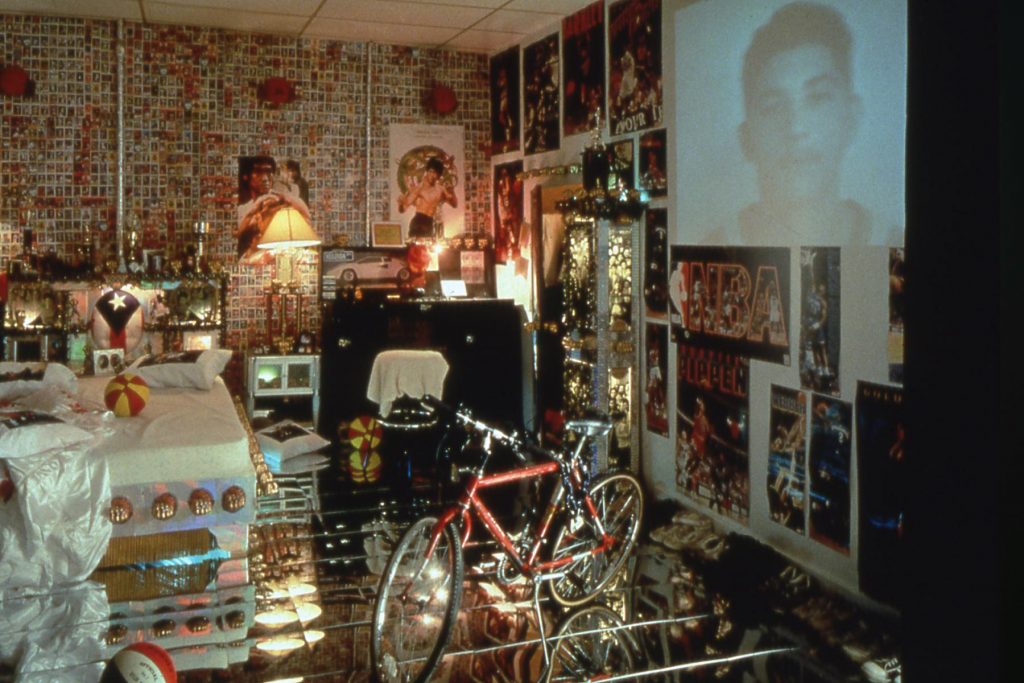
Pepón Osorio, Badge of Honor, 1995. Photo: Sarah Welles
Drawing on his childhood in Puerto Rico and his adult life as a social worker in the Bronx, artist Pepón Osorio creates meticulous installations incorporating the memories, experiences, and cultural and religious iconography of Latino communities and family dynamics. The 2018 CAA Distinguished Artist Awardee for Lifetime Achievement, Osorio is a professor in the Community Arts Practices Program at the Tyler School of Art at Temple University. He is also the recipient of a 2018 United States Artists Fellowship, among many other awards and fellowships.
CAA media and content manager Joelle Te Paske worked with Pepón in 2016 on reForm, a project responding to school closures in Philadelphia in collaboration with students, teachers, and Temple University. In the project high schoolers, affectionately nicknamed “Bobcats” after their former school mascot, were invited to contribute to an art installation at Tyler School of Art, where they also met with local politicians to advocate for community-based school reform.
Joelle caught up with Pepón in January 2018 to hear his thoughts on being an artist and professor, and to learn about his hopes for the year ahead.
This interview has been edited for length and clarity.
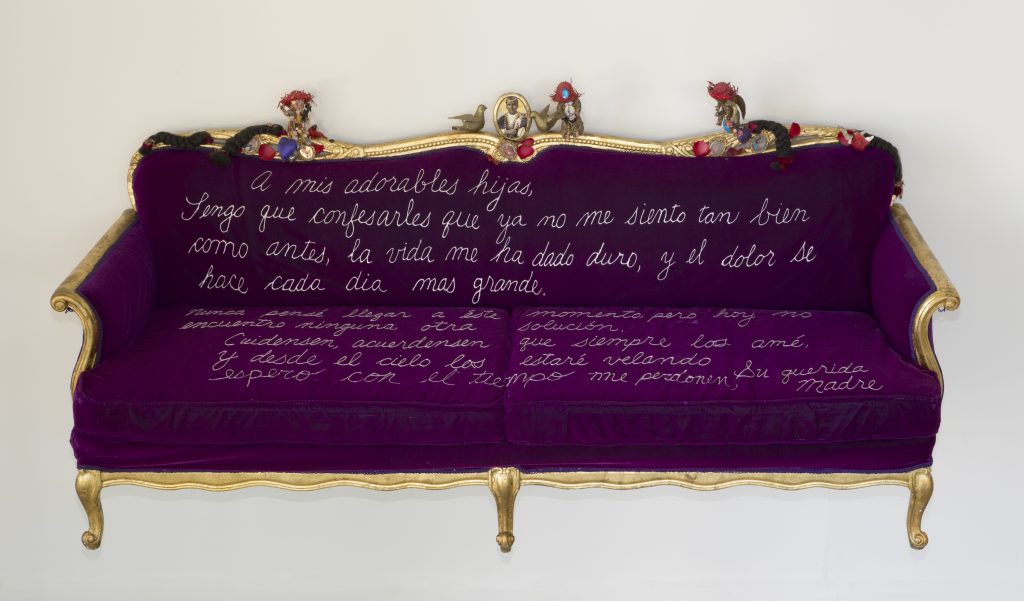
Pepón Osorio, To my darling daughters, 1990. Photo: Carlos Avedaños
JTP: I’m happy to be speaking with you. When I heard that you were getting the award, it was great news!
So, we find ourselves in 2018—how are you doing? What’s on your mind?
PO: I think that I am still processing the fact that we are in 2018 and 2017 didn’t look very good for us. Both as an artist and a citizen. I’m hoping that we begin to tell the truth in a country of lies. I hope that is what 2018 is like. This is a very interesting moment with the CAA lifetime achievement award, because I’ve been mostly thinking in retrospect. How in the world did we get here? How did we get here and how did this happen?
I’m looking in retrospect and trying to see where energy is stored and how to rejuvenate so I can move forward with a new perspective. That’s where I’m at.
JTP: I love that—looking for pockets of energy that are there, but haven’t quite been found.
PO: That in addition to how do we tell the truth in a country of lies? What does that mean? Everything’s been blurry to the point that you begin to doubt. That’s where we are.
JTP: Definitely. And what does your work look like right now?
PO: I am working on a couple of ideas. My production is very, very, very small. I don’t produce tons of work. I only produce work that I feel is urgent and is important. So I’m working on a whole bunch of ideas for possible pieces. Of all those ideas, one will emerge and come out. I’m working with that and also teaching. I’m trying to perfect the transformation of my methodology into a philosophical pedagogy. I’m trying to figure that out without losing touch with my creative self and my sense of curiosity.
JTP: When you say philosophical, do you mean putting together a formal pedagogy? Or more in a spiritual way?
PO: Well, both. I have been teaching at Tyler over the years and I feel that I always want to be able to center myself in my pedagogy in the way that I center myself in my artistic practice.
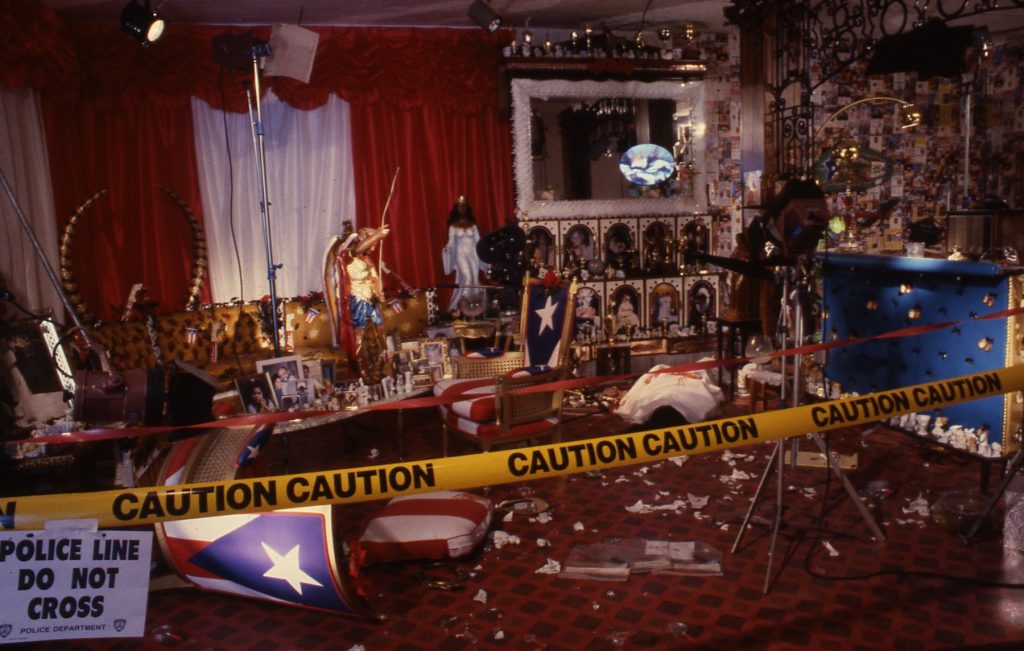
Pepón Osorio, Scene of the Crime… (whose crime?), 1993. Photo: Frank Gimpaya
I’m looking at what I’m really good at and that which I know most, which is my methodology of getting my work done, my practice. How do I transform that into a pedagogy of philosophy? That I can go around and teach something that I feel has this philosophy at the center of the work, similar to my artistic practice. Those are the things that I’ve been doing. A lot of looking in retrospect. Really looking in retrospect at the system.
JTP: That’s great. I’ve enjoyed being at CAA because I’ve been thinking more about history. It’s always there for you to learn from. The more you dig into it, the more you learn about the moment you’re in.
PO: Exactly.
JTP: What are the biggest changes you’ve seen in your time at Tyler as part of the faculty?
PO: The changes that I’m seeing at Tyler are new faculty members are coming in with a preoccupation that seems to be different from the history Tyler was built on. I’m looking at faculty members who are much more interested and preoccupied with things other than the object; where new faculty members are coming in with a clear understanding of what the true intention of becoming an artist is.
So I’m seeing that. I’m seeing transformations. We obviously have a new dean who is also looking at ways of transforming the past into a bright and hopeful future. Which is basically what I think this whole nation should be looking at.
JTP: I’m with you. Feels a little blurry, as you said, right now.
PO: Exactly. I think that the new blood and new faculty members that are coming to Tyler are interested in redefining a lot of concepts. I see that a lot in the world. I see that a lot with new generations of people coming up who are very interested in: “Let’s redefine this thing, because the system as it is simply doesn’t work.”
JTP: Would you say that’s your favorite part of being on the faculty at the moment?
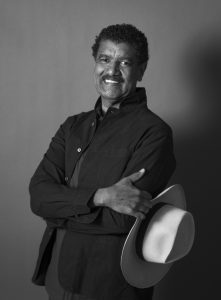
Pepón Osorio
PO: Yes. Also because I always feel that I found a niche in this. As an artist, dealing with the social, the political, the truth, and interdisciplinary work that creates very complex, chaotic environments—all that stuff seems to be so unacademic. I came in and I just felt like, “What in the world? What is my place in all this?” Little by little, by joining a new faculty and redefining, it’s making perfect sense. I’m finding myself more and more comfortable. That there are people around me that are supportive, that understand my trajectory and understand how I got to where I am now, whatever that place is.
It’s wonderful and I think to me that is a highlight. It’s finding a space in academia that feels comfortable and that I can bring the complexity of who I am into it, without necessarily having to be only one person.
JTP: I think that’s beautifully put. Everyone brings their own experiences. No one wants to be part of a monolithic institution that doesn’t let people be themselves …well, ok, some people do. But it’s interesting to me there’s so much more openness for that than I thought there might be, coming to a traditional academic membership organization like CAA, for instance.
PO: Basically, for me, it feels that this is not in demand. I am not filling up a demand of what all the people want to see. This is who I am. In relationship to the earlier question, I just feel like I was able to figure out a way to become myself in a world where people have demands of, “Oh you should be a professor.” Everybody thinks that you should be a [certain type of] professor. No. You just can’t be anybody else but who you are. It just so happened that being a professor is part of that.
We are looking at being an artist from a three-dimensional reality and in a more inter-dimensional way—that being an artist and professor is a very complex human being. I love that. I’d love to embrace that and not hide it from anyone. As a professor, I come in with all my imperfections as well. It’s not like I’m trying to correct them, I’m just going to do a balancing act with all this. That’s me, anyway.
JTP: If there was one thing that you would recommend to students or artists that they should be reading that they aren’t, what would you recommend?
PO: I’m not sure, but a student did ask me the other day if I have a recommendation of what he should be reading and what came out, which is really interesting, was feminist literature. Just listen to that stuff, read it, and understand what it means so then you can place yourself, as a male, in a place of understanding. That’s all.
JTP: I love it—you say, “Yes, I have an answer. Feminist literature.” Done.
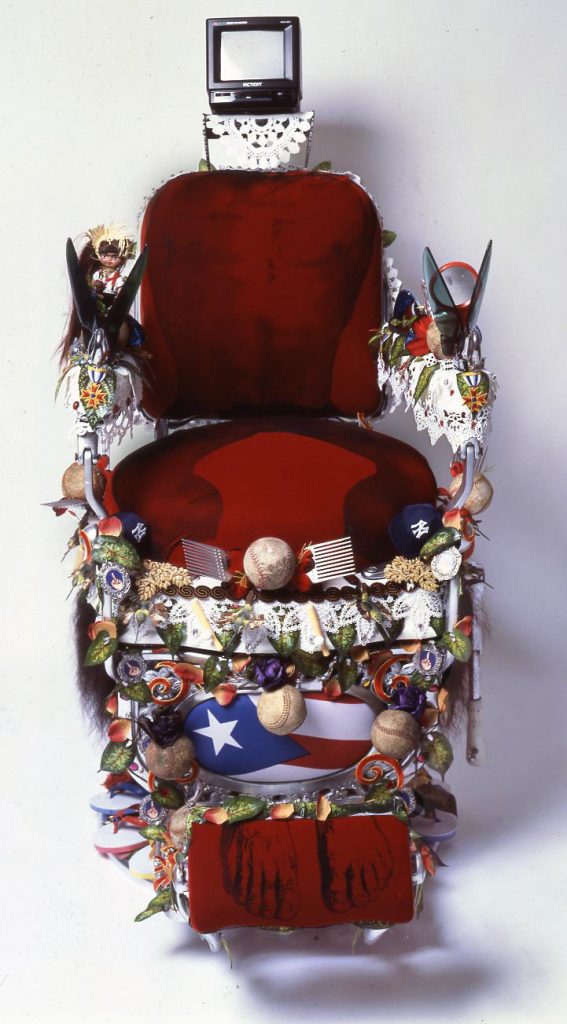
Detail, En la barbería no se llora (No crying allowed in the barbershop),
1994. Photo: Frank Gimpaya
PO: I think that women should be reading it, but I think that men should be getting into it and reading and understanding where it comes from. I think that people, mostly men, will probably begin to empathize with the reality and the system, the fact that it’s not supportive of women.
JTP: I’m curious if you’ve attended CAA conferences in the past? What did you think?
PO: I have participated in the past. I have been in a couple of them.
JTP: It’s my first experience with the conference. It’s enormous.
PO: Yes, it always surprises me how the college system is much bigger than what I always think of it. I just wish that there were much younger people coming in to turn this thing upside down.
JTP: I agree. We’re trying to think of different ways to get closer to that. This year I know that we’re doing outreach to high schools in LA for all the free events. How amazing would it be to have a whole bunch of juniors and seniors in high school from a local public LA high school show up at the LA convention center alongside established, older academics? Just everybody.
PO: So both of them can see each other. Both of them can see each other and it’s like, “Okay, this is what’s coming up,” and the younger will say, “Oh, this is what it’s been.”
Find a happy medium somewhere in there. It’s just too much of the extremes. That’s my reaction. Too much of the extremes.
JTP: I agree. It reminds me of reForm, even just in terms of space—basically allowing people to feel comfortable. I just loved that the Bobcats (high school students who collaborated on the project with Osorio) walked through the main space of Tyler to get down to their classroom. It made Tyler theirs, in a way.
PO: A lot of people asked me, “Why aren’t you doing this piece in their neighborhood?” It was because the chances for the students to come into a college and to occupy space in a college environment were one in a million. I just thought if we can open up a space for them to occupy a classroom, open up a space for them to understand and to begin to look at the social architecture of a university, that’s more than enough for me.
I think that’s basically what I’m referring to when I’m talking about the CAA conference. If we can only suggest and show up a little bit more, that it’s much bigger than that, and that there’s a world out there both ways, that’s it. That’s what needs to happen. So people can come and begin to think differently. That was exactly what happened with the Bobcats. I said, “I’m just doing this at the institution because there are multiple functions in which the institution can work. This is one of them.” We think about institutions as the only place for education. Education is much bigger than that.
JTP: I agree, and I think that gets us closer to the truth you were talking about earlier. It opens up many more opportunities.
PO: Yes. It unties that sense of curiosity in all the kids’ minds.
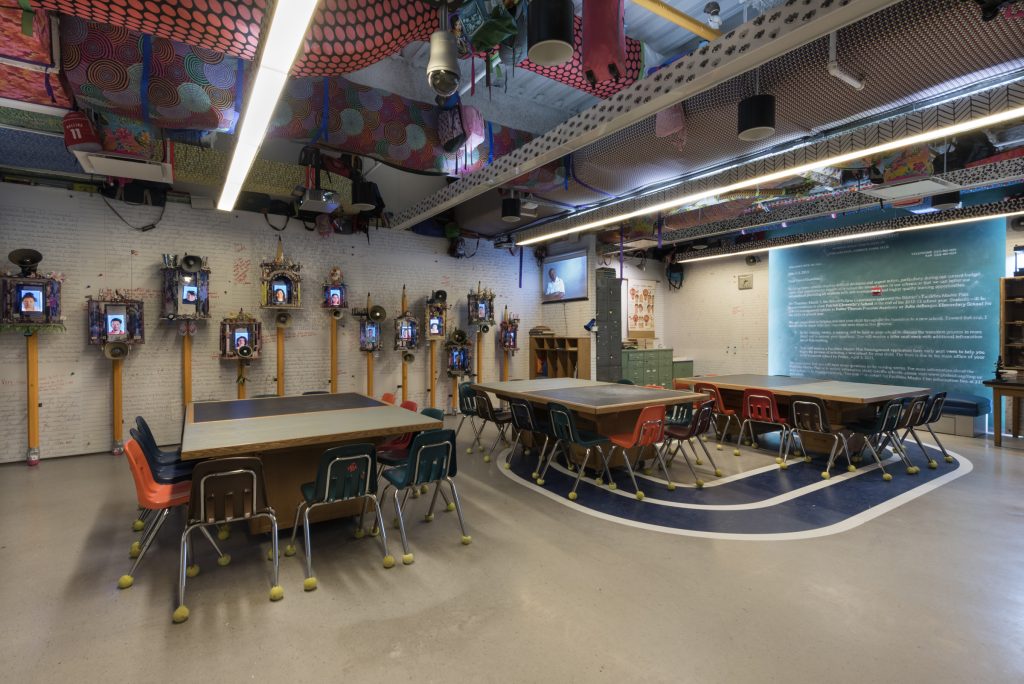
reForm, 2014-2016, installation at Tyler School of Art classroom. Photo: Constance Mensh
JTP: Do you think artists can change the world?
PO: I think artists have changed the world. I think that the changes that I have seen in this country are not by artists alone, but I think that they have. When you’re talking about artists, I think you’re mentioning just these single artists changing the world, and I don’t think that that has happened. But I don’t think that that cannot happen.
I’m saying yes, because in the changes that I’ve seen in the world, there has always been an artist behind that. I do agree, but I don’t think that an artist alone can do it.
To break it down, I think that creativity has always been at the center of world’s change. Artists have always been on the periphery of it. Sometimes at the center of those changes.
JTP: Great, thank you. Lastly, you touched on this a bit, but what gives you hope for the future?
PO: Change.
JTP: Pepón, I’m right there with you. The possibility that it won’t be how it is right now.
PO: Exactly. That’s all. I just hope for change.
CAA’s Annual Conference Convocation, including the presentation of the Awards for Distinction, will occur February 21, 6:00-7:30 PM and will be livestreamed.


